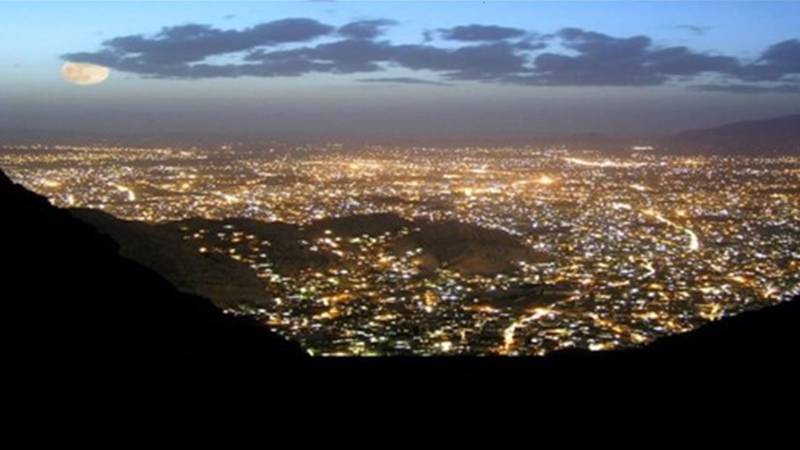
Quetta, often referred to as "Little London," is located in the southwestern part of Pakistan, cradled within a valley surrounded by majestic mountains on all sides. It is a city of stark contrasts, where the rugged beauty of nature meets the vibrant hues of diverse cultures. Standing at an elevation of 1,680 meters (5,510 feet) above sea level, Quetta's unique climate and landscape have earned it the title of the "Fruit Garden of Pakistan." The orchards that dot the landscape produce a cornucopia of fresh and dried fruits, making the city a vital agricultural hub in the region.
The city's charm lies not only in its natural beauty but also in its rich cultural tapestry. Quetta is a melting pot where various ethnic groups and languages coexist harmoniously. Pashtuns, Baloch, Punjabis, Brahvis, and Hazaras all call this city home, each contributing to its vibrant cultural mosaic. The streets of Quetta are alive with the sounds of different languages, the aroma of diverse cuisines, and the sight of colourful traditional attire, creating a unique blend that is both exotic and familiar.
The Hazara migration: a journey of survival and hope
The story of the Hazara people in Quetta is one of resilience and unyielding spirit. Their journey to this city began in the late 19th century, during the reign of Abdur Rahman Khan in Afghanistan, a ruler infamous for his cruelty and relentless persecution of the Hazaras. Faced with unimaginable suffering, thousands of Hazaras fled their homeland in search of refuge, leaving behind everything they knew for the promise of a peaceful life in Quetta.
Each year, the Hazaras plant trees in memory of their loved ones who have passed away, whether due to violence or other causes. These trees are not just symbols of remembrance but also acts of defiance against the harsh realities of their environment.
The Hazaras settled in the mountains surrounding Quetta, constructing humble homes out of bricks and mud. This settlement grew into what is now known as Meherabad, later called Mariabad. Initially a small town, Mariabad gradually evolved into a bustling urban area. The Hazara community, known for their resilience and industriousness, built schools, language centres, training facilities, and hospitals, turning their small settlement into a vibrant and self-sufficient community.
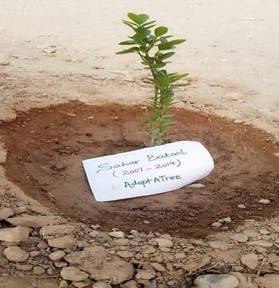
Dark shadows of sectarianism and tragedy
Despite their contributions to Quetta and their peaceful existence, the Hazara community has faced horrific sectarian violence. Over the years, they have been targeted in brutal attacks, leaving deep scars on the community. Bomb blasts and targeted killings became a tragic reality, shattering families and leaving a lasting psychological trauma on the Hazara people.
One of the most harrowing aspects of this violence has been the impact on the youth. Desperate to escape the cycle of violence and pursue a better life, many young Hazaras embarked on perilous journeys to Australia and Europe. These journeys, often undertaken illegally, have ended in tragedy for many, with ships sinking and lives lost at sea. Entire families have been devastated, with some losing multiple sons in their desperate bid for a brighter future.
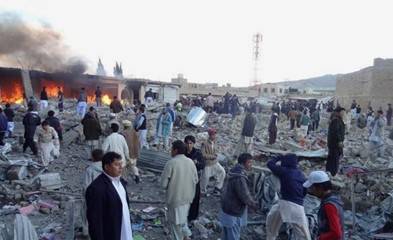
Beacon of resilience: the green transformation of Mariabad
In the face of these immense challenges, the Hazara community has refused to surrender to despair. Instead, they have channelled their pain and loss into constructive and life-affirming endeavours. Mariabad, once a small, dusty settlement, has been transformed into a symbol of resilience and hope. The community has invested in sports grounds, fitness clubs, food points, juice shops, book cafes, and most notably, extensive greenery.
Each year, the Hazaras plant trees in memory of their loved ones who have passed away, whether due to violence or other causes. These trees are not just symbols of remembrance but also acts of defiance against the harsh realities of their environment. The community has implemented various methods of nurturing these plants, including daily watering, small irrigation channels and drip irrigation systems.
This commitment to greening their environment has extended beyond personal memorials. The Hazara people have planted trees throughout Mariabad, turning it into a verdant oasis in the harsh landscape of Quetta. Trees line the streets, stand proudly in markets and near mosques, and even grow in the graveyards. In a place where life has often been brutal and short, the act of planting a tree is a powerful statement of faith in the future.
Green graveyards: a unique tribute to the departed
Perhaps one of the most poignant sights in Mariabad is its green graveyards. Unlike typical graveyards, where the atmosphere is often sombre and barren, the Hazara graveyards in Mariabad are lush with greenery. Trees are planted in sequence on both sides of the main tracks, with one or two trees near each grave. These trees, nurtured by the community, stand as living memorials to those who have passed on.
Even in death, the Hazara people remain connected to the living world through the trees that shade their graves. This tradition of planting trees in graveyards is a unique aspect of Hazara culture in Quetta, reflecting their deep connection to the land and their belief in life’s continuity, even after death.
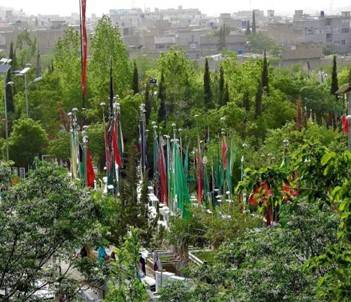
Green homes: urban gardens in the mountains
The commitment to greenery doesn’t stop at public spaces. The people of Mariabad have turned their homes into mini-gardens, with plants and trees growing in courtyards, on rooftops, and along the narrow alleys that wind through the settlement.
Even those living in modest mud homes have embraced this tradition, cultivating small gardens wherever space allows.
These urban gardens are not just aesthetic; they are practical, too. In a region increasingly affected by climate change, the trees and plants help to cool the environment, provide shade, and create a more pleasant living space.
The greenery also plays a vital role in combating the effects of heatwaves, which have become more frequent and severe in recent years.
Spirit of Mariabad: a community united by nature
The transformation of Mariabad into a green town is a testament to the Hazara people’s resilience and unity. In the face of violence, discrimination, and hardship, they have found solace and strength in nature. The act of planting a tree has become a symbol of their collective spirit—a way of honouring their past, protecting their present, and nurturing hope for the future
The Hazara community’s commitment to greening their environment goes beyond aesthetics and cultural traditions; it is a strategic response to the growing threat of climate change and the intensifying heat waves that have increasingly plagued the region. Quetta, like much of Pakistan, has experienced rising temperatures and more frequent and severe heatwaves in recent years. This has brought new challenges to a community already grappling with significant social and economic pressures.
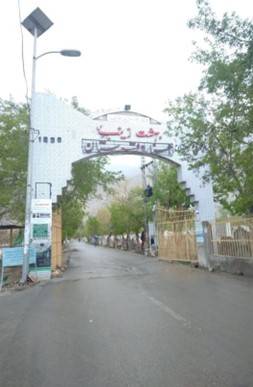
Recognizing the urgent need to mitigate these effects, the Hazaras have turned to nature as a solution. By planting trees and cultivating greenery, they are actively working to reduce the impact of heatwaves and create a more resilient environment. Trees play a crucial role in regulating temperatures by providing shade, cooling the air through the process of transpiration, and reducing the urban heat island effect, which is particularly pronounced in densely populated areas like Mariabad.
The community has strategically planted trees and shrubs not only in public spaces but also around their homes, shops, and mosques. These plants create a network of green spaces that collectively help to lower ambient temperatures. The shade provided by these trees offers immediate relief during hot days, while the long-term benefits include improved air quality and a more comfortable microclimate.
Moreover, the greenery helps to combat climate change by absorbing carbon dioxide, one of the major greenhouse gases contributing to global warming. The trees in Mariabad act as natural carbon sinks, helping to offset some of the emissions produced by human activities. This is particularly important in an urban environment where pollution levels can be high.
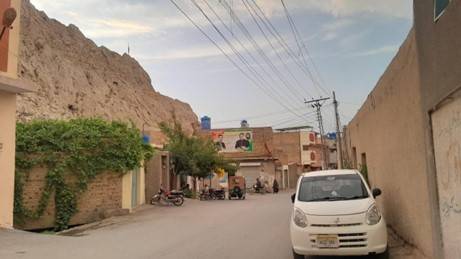
The Hazaras have also embraced innovative watering techniques to ensure their plants thrive despite the arid conditions of Quetta. They use small irrigation channels, drip irrigation systems, and water conservation practices to sustain their greenery. These methods are particularly effective in managing limited water resources, ensuring that each plant receives the necessary moisture without waste.
In addition to cooling the environment and absorbing carbon dioxide, the increased greenery also helps to reduce soil erosion, another issue exacerbated by climate change. The roots of the trees and plants hold the soil together, preventing it from being washed away during heavy rains or blown away by strong winds, which are common in the mountainous region surrounding Quetta.
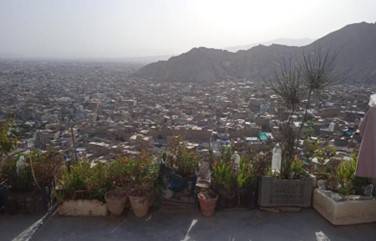
The Hazara community’s green initiative is a holistic approach to tackling climate change. By creating green belts, urban gardens, and tree-lined streets, they are building a natural defence against the harsh realities of their environment. These efforts not only improve their immediate surroundings but also contribute to the global fight against climate change.
The story of Mariabad and its people is a powerful reminder that even in the darkest of times, there is always a way to create light. Through their commitment to greening their environment, the Hazara community has not only transformed their town but also set an inspiring example for others. Their story is one of hope, resilience, and the enduring power of nature to heal and renew.
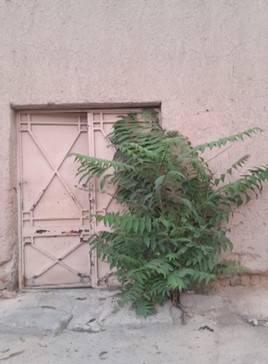
In addition to this, the transformation of Mariabad into a green town is a powerful example of how a community can adapt to and mitigate the effects of climate change through collective action and a deep respect for nature. In a world where many are grappling with the consequences of environmental degradation, the Hazaras’ commitment to planting trees offers a hopeful model of resilience and proactive change.
The Hazara community's planting efforts are directly addressing the challenges posed by heatwaves and climate change, demonstrating their innovative and proactive approach to creating a sustainable future.
This expanded narrative captures the essence of Quetta and the Hazara community's journey, highlighting their resilience, their deep connection to nature, and their determination to build a better future despite the challenges they face

